We often hear the term “machine gun” tossed casually into conversation, but did you know that machine guns have been use in one form or another for hundreds of years? Modern machine guns forever changed the face of warfare, starting around the turn of the twentieth century. Let’s talk about the history of the machine gun.
Machine Gun – Ancient History
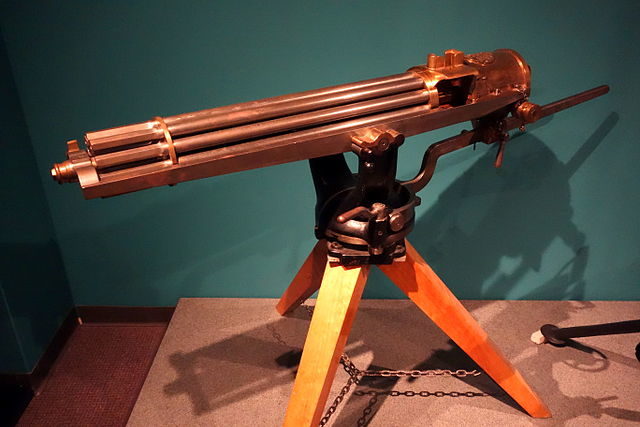
The legal definition of a machine gun in the United States is any gun which fires more than one bullet per trigger pull. Fully manual versions of rapid-firing weapons existed back into the 1500s, with organ guns and Pickle guns some of the famous examples.
During the American Civil War, Agar guns and Gatling guns were available but rarely used in combat. The first Russo-Japanese War is generally considered the first war to use modern machine guns in regular combat.
The Russo-Japanese War
In February 1904, Russia and Japan went to war over their imperial ambitions in Korea and Manchuria. With machine guns and rapid-firing artillery on both sides, the Russo-Japanese War became the first conflict fought on the world stage that used modern armaments.
The Imperial Japanese Army favored the Hotchkiss machine gun, while the Imperial Russian Army purchased the Maxim model, created in 1884 by Sir Hiram Maxim.
If European military authorities were paying attention to the conflict in the east, they might have been able to prevent many of the tragedies of trench warfare a decade later. Unfortunately, they continued to believe – as the Russians and the Japanese did – that their armaments would easily outpace those of the other side.
Unfortunately, that simply was not the case. The Russo-Japanese War, lasting for two years, previewed the painful losses of World War I, from the heavy casualties inflicted by machine guns and artillery shelling, to the stalemates and lingering war wounds.
World War I
Although artillery weapons actually caused the most casualties in the First World War, the machine gun is closely associated with the misery of trench warfare. The British were armed with Vickers machine guns, a redesigned and water-cooled heavy gun based on the Maxim weapon. The Vickers machine gun could fire up to 600 rounds per minute when used by a trained team, with a two-minute pause per hour to change the barrel.
The German Army, meanwhile, used its own variant of the Maxim called the MG 08. This weapon also fired between 500 and 600 rounds a minute. When put into play against an army of schoolboys who’d joined up under propaganda linking cricket bats to knight’s swords, the face of warfare was forever changed.
World War II
During the period between the two world wars, the machine gun was clearly defined as the weapon of the future. Countries stressed creating a weapon which was inexpensive to manufacture and easy to repair and replace. Early manufacturers struggled with offloading the heat generated by the rapid firing mechanism of the machine gun. During World War I, machine guns were often water cooled, but by World War II, these systems had been discarded, and open bolts sufficiently cooled most weapons.
Commonly used machine guns during this period included the Bren light machine gun, the M1919 Browning, and the Browning M2. The German-made MG34 was the first machine gun used in many different situations, but it was difficult to manufacture. This was later redesigned into the MG42, which was used in every situation during World War II other than vehicle mounts.
Cold War And Associated Conflict
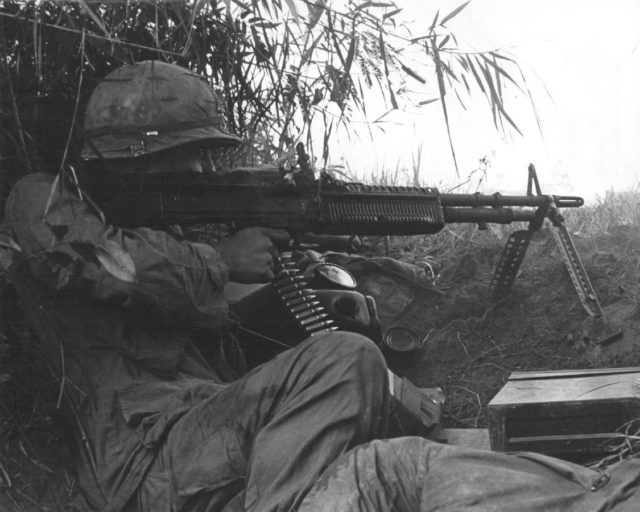
During the Cold War, the U.S. military needed to replace both the Browning Automatic Rifle, as well as the M1919. They wanted one weapon which could be fired either from the shoulder or from the hip.
The M60 was designed during this period, and was first issued to troops during the Vietnam War. Improvements in the speed of fire allowed these weapons to be mounted on helicopters, where rapid shots made up for inaccuracies.
Current Developments
The machine gun has not changed in dramatic ways since the M60. Overall, the design functions well, without significant breakdowns or problems in production. Further innovations have focused on the ammunition, with caseless ammunition, anti-missile, and anti-armor weaponry drawing attention.
Future designs have focused on ammunition, as the machine gun has appeared to be as advanced as is currently necessary. Caseless ammunition and anti-armor and anti-missile weapons have been the focus for several years. Modern American military might carry a number of different types of machine guns, depending on assignment and location.
Common weapons include the MP5 submachine gun, the M249 light machine gun, or the M240 general purpose machine gun. The Browning M2HB is a heavy machine gun, which can be used on a tripod or mounted on a vehicle.
How Did The Machine Gun Alter Warfare?
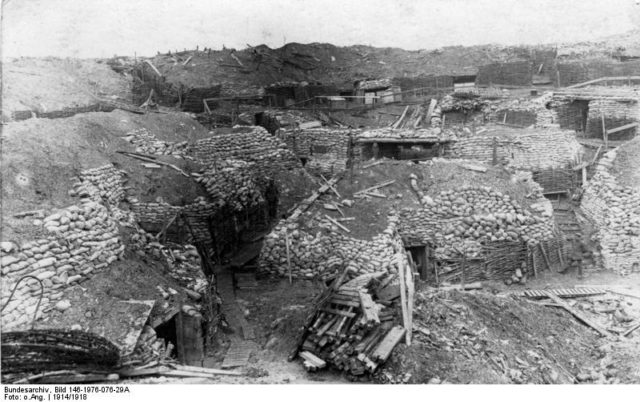
Simply put, the machine gun increased humanity’s capacity to kill each other, and very quickly. Historians have commented that in both the Russo-Japanese War and the First World War, each side believed that new weaponry meant they could overpower the other side with relative ease. Each side failed to realize that it was equally matched with its opposition until it was too late.
The machine gun put an end to the old days of the European war, where armies lined up in neat rows and then proceeded across the battlefield to clash with each other. Towards the end of World War I, rudimentary tanks provided cover for forces as they crossed No Man’s Land. Once they arrived at the German trenches, they were easily able to overpower decimated and exhausted forces.
In reflection, the leaders of the Armed Forces finally began to understand what they should have realized years before: that the implementation of rapid firing weapons meant that new strategies would need to be deployed in coming conflicts.
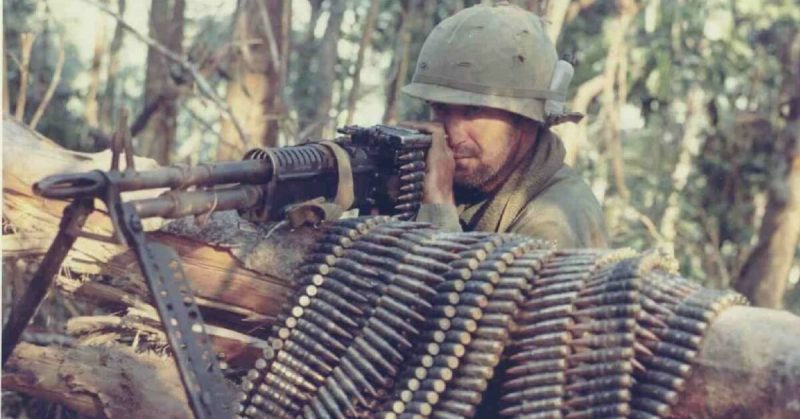
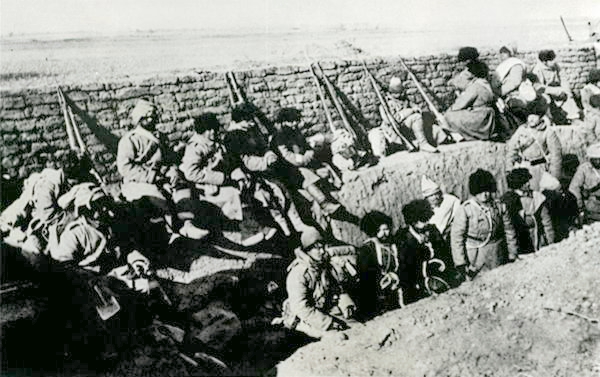
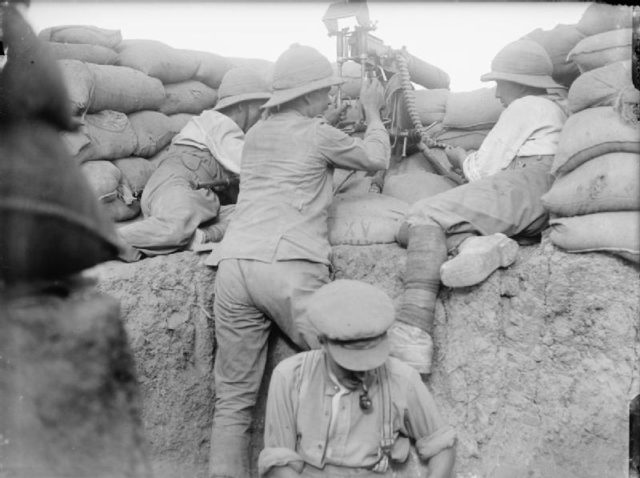
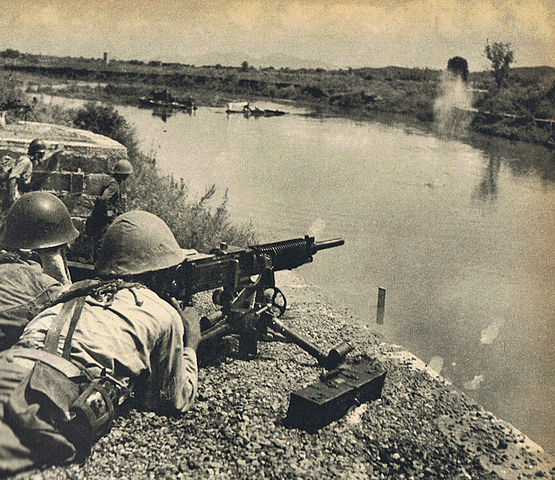
![By Sgt. Michael J. MacLeod [Public domain], via Wikimedia Commons](https://www.warhistoryonline.com/wp-content/uploads/sites/64/2016/09/indian_army_rfn_anil_pawe_and_spc-_henry_vaillancourt_partner_up_to_fire_an_m249_squad_automatic_weapon.jpg)